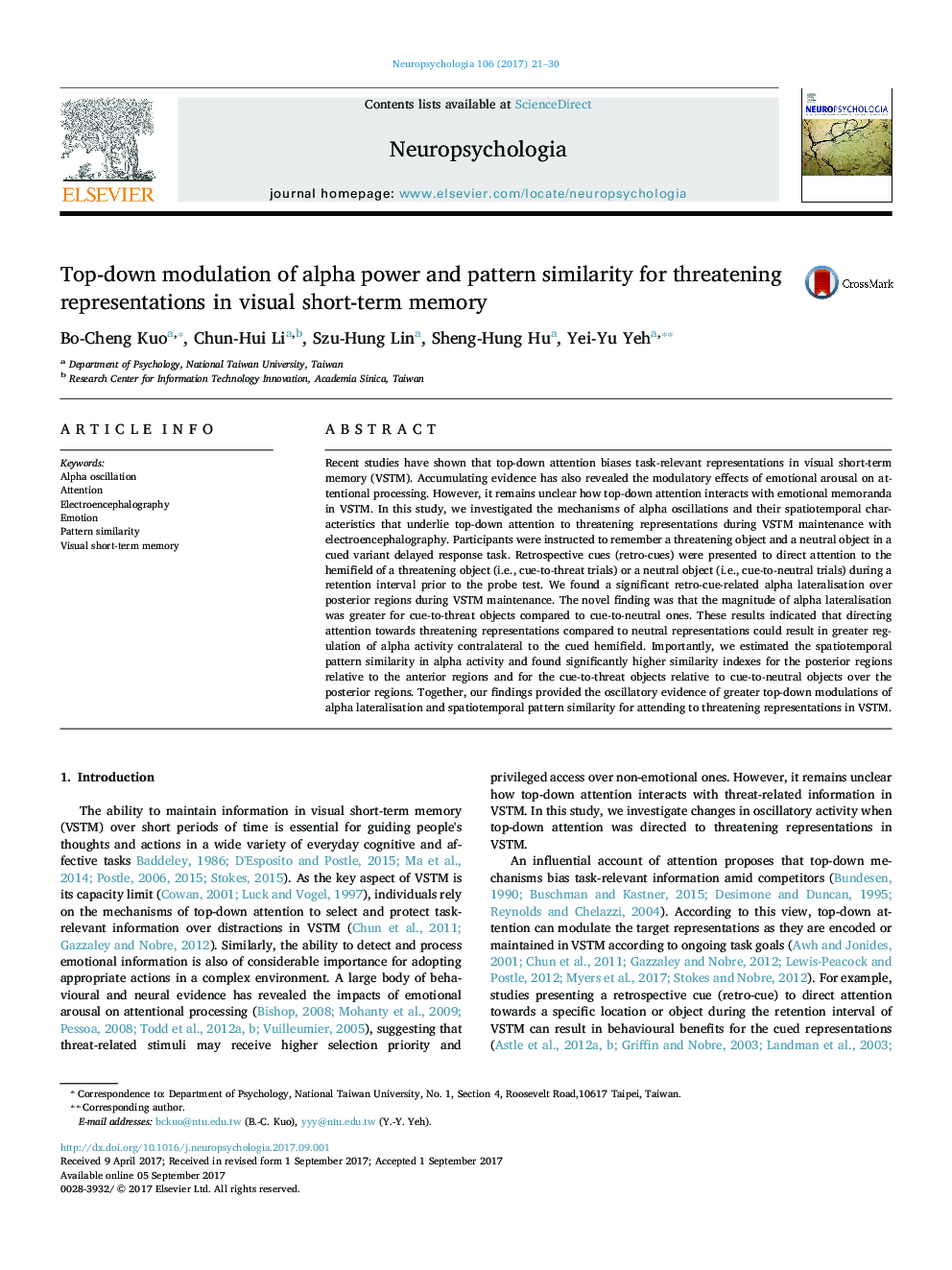| Article ID | Journal | Published Year | Pages | File Type |
|---|---|---|---|---|
| 5045027 | Neuropsychologia | 2017 | 10 Pages |
â¢Retro-cues directed attention to threatening or neutral objects in VSTM.â¢Top-down attention via retro-cueing elicited alpha lateralisation.â¢Lateralisation began early and sustained for threat compared to neutral objects.â¢Greater lateralisation was found for threat relative to neutral objects.â¢We found significant oscillatory similarity in alpha pattern for threat.
Recent studies have shown that top-down attention biases task-relevant representations in visual short-term memory (VSTM). Accumulating evidence has also revealed the modulatory effects of emotional arousal on attentional processing. However, it remains unclear how top-down attention interacts with emotional memoranda in VSTM. In this study, we investigated the mechanisms of alpha oscillations and their spatiotemporal characteristics that underlie top-down attention to threatening representations during VSTM maintenance with electroencephalography. Participants were instructed to remember a threatening object and a neutral object in a cued variant delayed response task. Retrospective cues (retro-cues) were presented to direct attention to the hemifield of a threatening object (i.e., cue-to-threat trials) or a neutral object (i.e., cue-to-neutral trials) during a retention interval prior to the probe test. We found a significant retro-cue-related alpha lateralisation over posterior regions during VSTM maintenance. The novel finding was that the magnitude of alpha lateralisation was greater for cue-to-threat objects compared to cue-to-neutral ones. These results indicated that directing attention towards threatening representations compared to neutral representations could result in greater regulation of alpha activity contralateral to the cued hemifield. Importantly, we estimated the spatiotemporal pattern similarity in alpha activity and found significantly higher similarity indexes for the posterior regions relative to the anterior regions and for the cue-to-threat objects relative to cue-to-neutral objects over the posterior regions. Together, our findings provided the oscillatory evidence of greater top-down modulations of alpha lateralisation and spatiotemporal pattern similarity for attending to threatening representations in VSTM.
